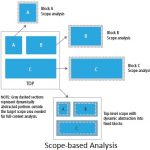The semiconductor design sizes, these days, can easily be of the order of several hundred millions of cells, adding into the complexity of verification. Amid ever growing design sizes, it’s a must that the timing verification is done accurately. Normally Static Timing Analysis (STA) is done to check whether all clocks and signals… Read More
Tag: timing
Automating PCB Timing Closure, Saving Up to 67%
The benefits of using EDA software is that it can automate a manual process, like PCB timing closure, saving you both time and engineering effort. This point was demonstrated today as Cadenceadded new timing-closure automation to their Allegroproduct family, calling it Allegro TimingVision. On Tuesday I spoke with Hemant Shah… Read More
Tempus: Cadence Takes On PrimeTime
Today Cadence announced Tempus, their new timing signoff solution. This has been in development for at least a couple of years and has been built from the ground up to be massively parallelized. Not just that different corners can be run in parallel (which is basically straightforward) but that large designs can be partitioned … Read More
CEO Interview: Jason Xing of ICScape Inc.
I recently had the opportunity to interview Jason Xing, Ph.D., CEO and President of ICScape, Inc. Below is a subset of the nearly two hour long interview.
How did you first become involved in EDA?
My EDA career started in the mid-90s when I started working on my PhD thesis at the University of Illinois in Urbana-Champaign. My thesis… Read More
Speeding SoC timing closure
As chips have become larger, one of the more challenging steps is full-chip signoff. Lots of other steps in the design process can work on just a part of the problem, but by definition full-chip signoff has to work on the full chip. But it is not just that chips have got larger, the number of corners that need to be validated has also exploded.… Read More






